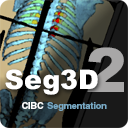|
|
typedef boost::recursive_mutex | mutex_type |
| |
|
typedef boost::unique_lock< mutex_type > | lock_type |
| |
|
|
static bool | LoadNrrd (const std::string &filename, NrrdDataHandle &nrrddata, std::string &error) |
| | Load a nrrd into the nrrd data structure.
|
| |
| static bool | SaveNrrd (const std::string &filename, NrrdDataHandle nrrddata, std::string &error, bool compress, int level) |
| |
|
static mutex_type & | GetMutex () |
| | Get the mutex that protects the Teem library.
|
| |
| Core::NrrdData::NrrdData |
( |
Nrrd * |
nrrd, |
|
|
bool |
own_data = true |
|
) |
| |
Construct the NrrdData wrapper from a nrrd own_data tells whether the data should be destroyed when this object is deleted
| Core::NrrdData::NrrdData |
( |
DataBlockHandle |
data_block | ) |
|
Construct a NrrdData object from an existing DataBlock of data The datablock handle will be stored internally until the object is deleted and the memory with the data is shared between the object and the nrrd object.
| Histogram Core::NrrdData::get_histogram |
( |
bool |
trust_meta_data = false | ) |
|
Get the histogram from the nrrd NOTE: If the data source can be trusted, the histogram is taken from the meta data, otherwise it is recomputed
| bool Core::NrrdData::get_originally_node_centered |
( |
| ) |
const |
Get whether the nrrd was originally node-centered Internally Seg3D converts the transform to be cell-centered, but we keep track of what the original centering was so that the transform can be converted back to be node-centered on export.
| bool Core::NrrdData::SaveNrrd |
( |
const std::string & |
filename, |
|
|
NrrdDataHandle |
nrrddata, |
|
|
std::string & |
error, |
|
|
bool |
compress, |
|
|
int |
level |
|
) |
| |
|
static |
Save a nrrd to file from nrrd data structure If compress is false, level will be overridden and set to 0, which corresponds to zlib setting for no compression
The documentation for this class was generated from the following files:
- Core/DataBlock/NrrdData.h
- Core/DataBlock/NrrdData.cc



 1.8.10
1.8.10